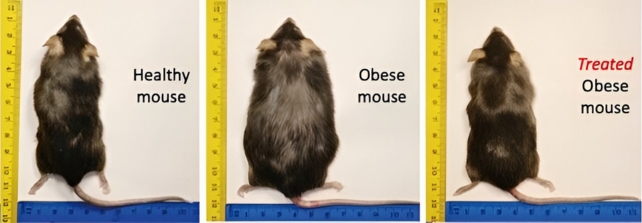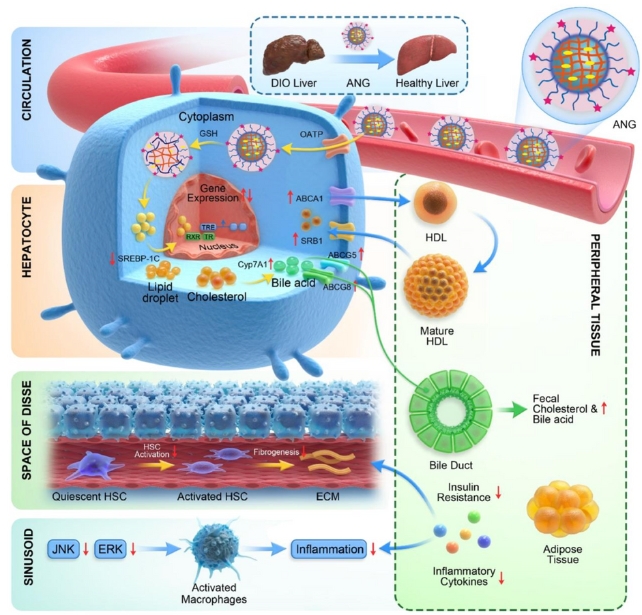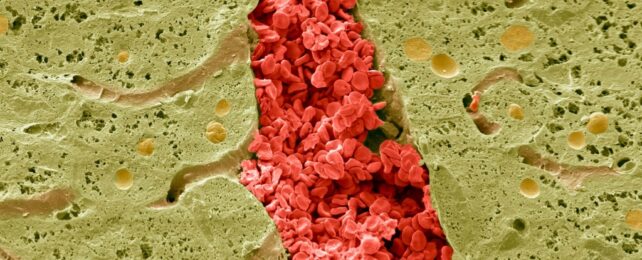Scientists have reversed diet-induced disease in obese mice by administering medication directly to the liver via a nanogel carrier, reducing the risk of side effects.
The research team say this new understanding of the mechanism means encapsulating drugs in nanogels could be an efficient method for treating similar diseases like fatty liver disease, type 2 diabetes, and high cholesterol in the future.
"One hundred million Americans have obesity and related cardiometabolic disorders," says biomedical engineer and chemist S. Thai Thayumanavan from the University of Massachusetts Amherst in the US.
"We became pretty excited about this work."
The nanogel delivers a synthetic thyroid hormone drug called a thyromimetic. Thyroid hormones help keep the liver's metabolism in balance, but taking thyromimetics systemically reduces their effectiveness and comes with side effects.
"We realized we needed to deliver this drug selectively to the liver because if it goes to other places, it could cause complications," explains Thayumanavan.
Thayumanavan and colleagues used mouse models to confirm that they could direct their carefully developed nanogel carrier with negatively charged (anionic) surfaces specifically to cells in the liver, called hepatocytes.
"We came up with a very simple approach, using our unique invention – nanogels that we can direct selectively to different targets," Thayumanavan says. "They were custom-designed for hepatocyte delivery in the liver."
A thyromimetic called axitirome was packaged up into anionic nanogels (ANGs) and administered to obese and control mice daily for five weeks via abdominal injection. The obese mice had been fed a diet high in fat, sugar, and cholesterol for 24 weeks leading up to the treatment.

"The treated mice completely lost their gained weight, and we did not see any untoward side effects," says Thayumanavan.
The mice maintained their diet throughout treatment, yet not only did their weight return to normal, their cholesterol levels dropped, and harmful levels of liver inflammation subsided.
"We found that we are activating the reverse cholesterol transport pathway, which lowers cholesterol," Thayumanavan says.
"We believe that activation of fat oxidation and an increase in metabolic rate are causing the loss in weight, but more work needs to be done to prove that point."
After the ANGs get into the hepatocytes, axitirome is released when the environment in the liver cells breaks down the bonds in the nanogel. The drug then binds to a protein that helps regulate the expression of genes.

The ability of ANG-delivered axitirome to reverse weight gain without causing widespread changes in thyroid hormone levels suggests there's promise in thyromimetics for treating metabolic conditions like obesity, a major public health issue.
Mice given axitirome continued to have an appetite for their ongoing high-density food diet, which the authors say is a notable aspect. It's contradictory to observations of humans using a different type of drug for weight loss.
"There is a significant amount of development work to be conducted between mice and humans," Thayumanavan says, "but we are hoping it will eventually become a drug."
Based on the nanogel technologies developed by his lab, Thayumanavan has co-founded a startup company, Cyta Therapeutics, with one main objective being to develop innovative delivery platforms to get the right drug to the right place in the body.
The study has been published in PNAS Nexus.
